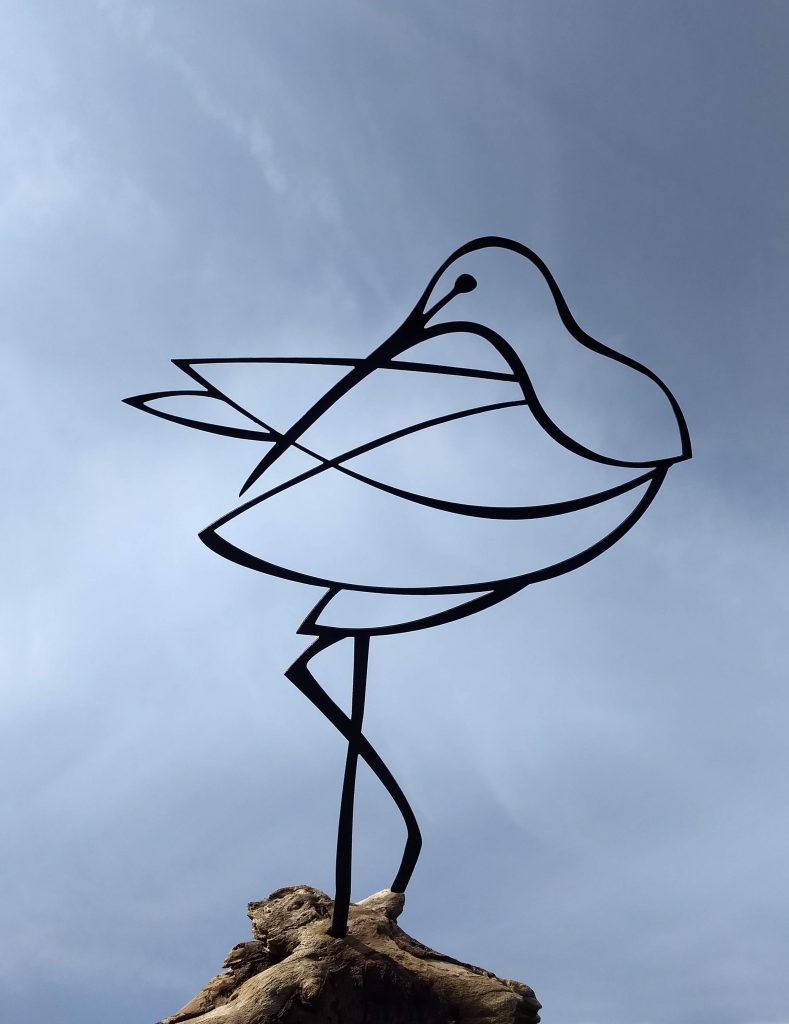I’d like to share a couple photos of my latest metal sculpture, a curlew. It is the first in a new series of sculptures of endangered British wildlife. (Sadly, this didn’t exactly narrow my options – finding species which aren’t endangered would be more difficult I think!)
I’m at the start of exploring a new range of possibilities using water jet cutting. There are a few motivations, if you can say that, underlying this. Firstly my main focus for the last seven months has been my little baby boy. Any creative time is now limited to his nap time. By their nature, painting and welding are pretty difficult to reconcile with baby care, as no sooner have I got set up to go then its time to pack up again! My husband is an engineer and he suggested a while ago that I explore water jet cutting. The designs, like all my sculptures, originate from my sketchbook, but are then created as vector images on my computer. I was sceptical of the process initially because I am such a hands on person, I didn’t like the idea of ‘making’ in this fashion. However, to my surprise, I found that I really enjoyed it, I love the process of refining and perfecting the design. I’ve always appreciated the ‘less is more’ aesthetic, and I love how I can refine the shape down to its bare essence, something that I always try to achieve in my drawings. My inspiration for these sculptures, beyond a pile of sketchbooks full of animals and birds stretching back to since I was around 14 years old, are calligraphy, and Chinese brush painting, things I have always loved. In a truly surprising way I think I even prefer this process to hands on welding, because as a beginner welder, the reality never quite lives up to the idea in my head!
The lack of hands on whilst creating the design was compensated for by the process of scavenging for driftwood to use as bases. Our all terrain pram is surprisingly useful even on the mud of the Lune Estuary, and my new pocket saw fits nicely in the changing bag. Once I’d collected my first cutout curlew from the waterjet company, K-Cut in Morecambe (who are extremely helpful and I highly recommend), I then waited until my husband could do a baby shift before exploring the next fun stage – finishing off the steel. I buffed it all over, cleaned it, then tempered it by applying a black patina, composed of various noxious acids. I then applied a coat of acrylic clear sealer. In future I am very keen to explore some different methods of colouring steel. Obviously, allowing it to rust would be the simplest option, but I wanted to protect it at least somewhat from the elements. I experimented with tempering the metal by heating it with a gas torch, but I was concerned that I might actually burn through this sculpture, as it is such thin metal. I was however very happy with the effect of this patina, which is sold to blacken guns. It gives a similar effect to tempering with heat, but is quick and straightforward.
Anyway, enough rambling on, this post is no doubt badly written, but like everything else I do at the moment, it’s done in a hurry and it will have to do!

